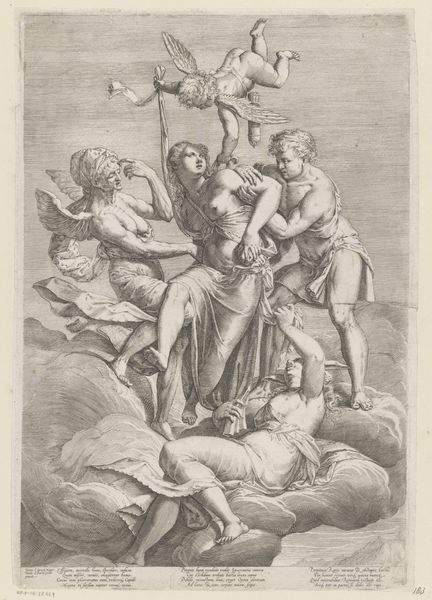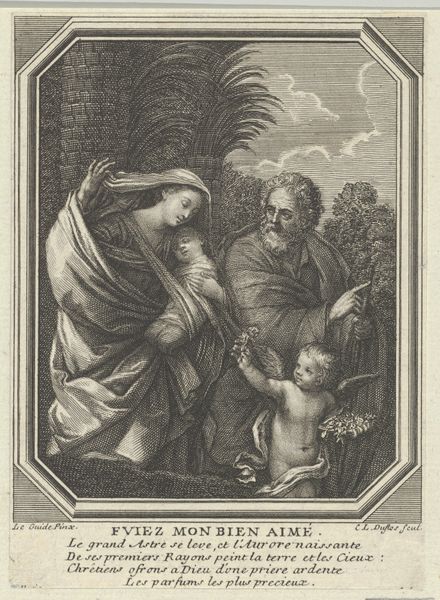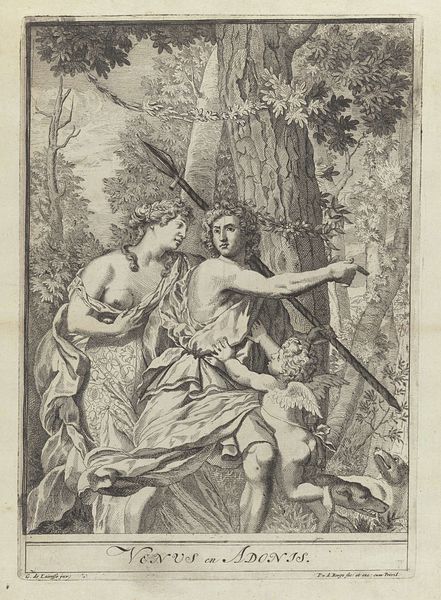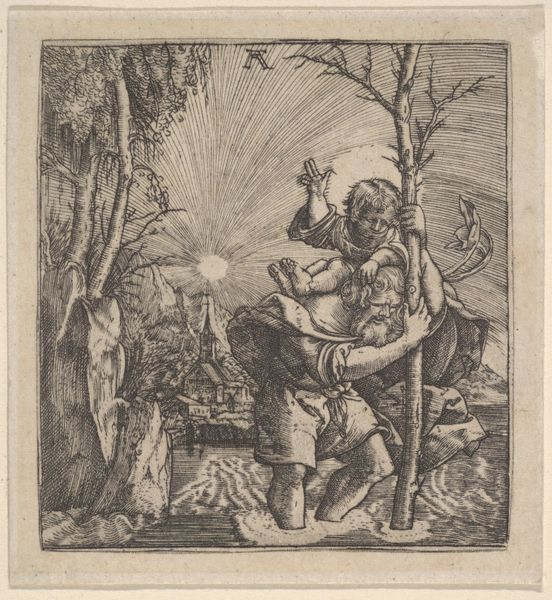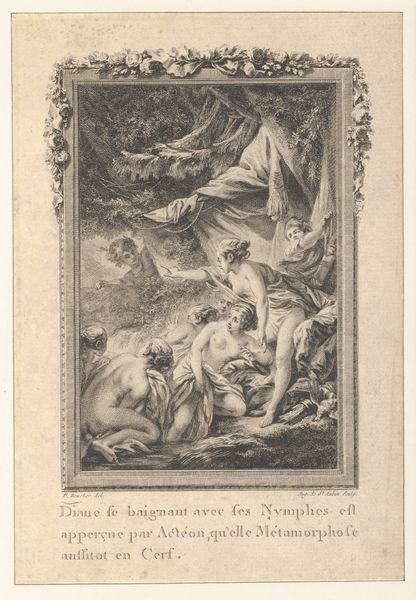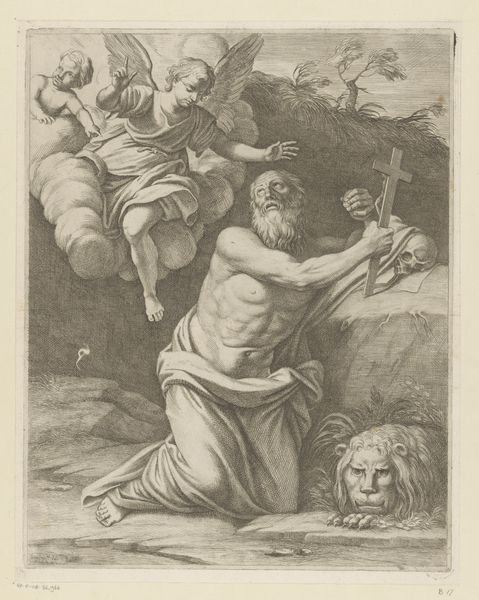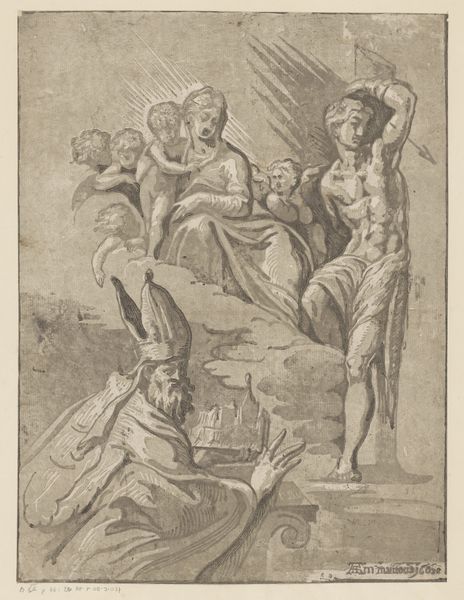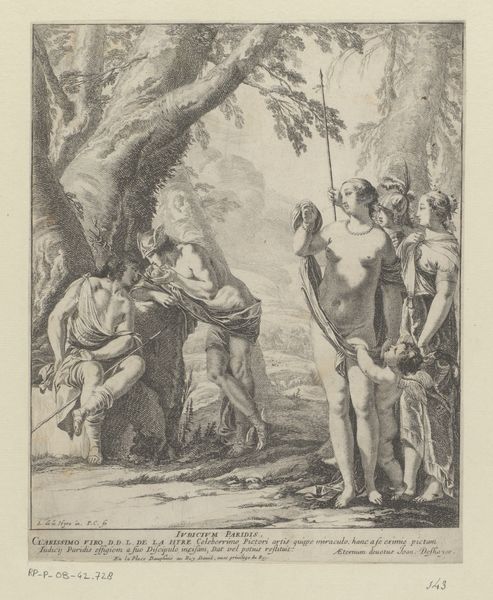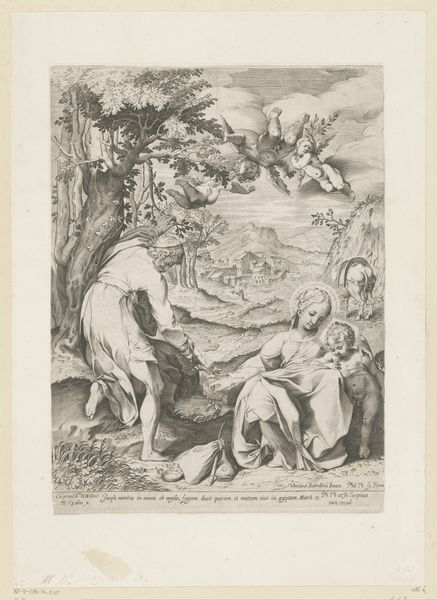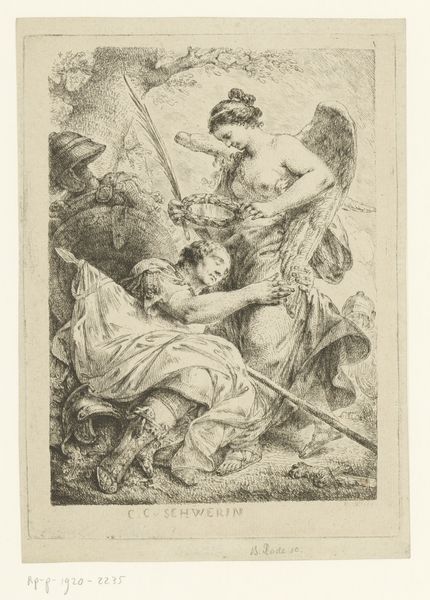
print, engraving
#
narrative-art
#
baroque
# print
#
old engraving style
#
figuration
#
personal sketchbook
#
history-painting
#
engraving
Dimensions: height 201 mm, width 157 mm
Copyright: Rijks Museum: Open Domain
Curator: Welcome. Here we have an engraving, likely from the 17th century, depicting the biblical scene "Tobias and the Fish." It's attributed to Claude Duvivier and showcases elements characteristic of Baroque narrative art. Editor: First impression? It’s got this nervous energy, all scratchy lines and light trying to break through. Not exactly peaceful, more like a charged moment. Curator: Yes, Baroque art often strives for dynamism. The image captures a key moment from the Book of Tobit: the angel Raphael guiding Tobias to catch the fish. Note how the angel's form and gesture lead your eye through the scene. He is touching Tobias at the shoulder in a guidance. The story goes that organs of this fish would miraculously heal Tobias' father’s blindness. Editor: Healing through fish guts! Baroque wasn't shy about the grotesque mixed with the divine, was it? All those squiggles suggesting texture— the wings, the water. It reminds me a little of a personal sketchbook rather than a formal piece, which, maybe it was? Curator: Indeed, this wasn't necessarily meant as a grand commission. The engraving technique, allows for the reproduction and wider dissemination of the story. See how the artist renders the drapery. Editor: Those rippling folds. I can feel the chill of the river water. Look how small he looks, leaning in, his entire posture conveying caution but readiness. It’s all feeling. You’d feel you want to jump right in the water as him and run the adventure. Curator: You're right; there’s an emotional weight. He trusts the angel as his guide. This represents faith and divine providence in a world fraught with danger and uncertainty. This moment represents divine trust over what will be. Editor: All captured in this one scratchy little print! There is a power and subtlety to it.
Comments
No comments
Be the first to comment and join the conversation on the ultimate creative platform.
